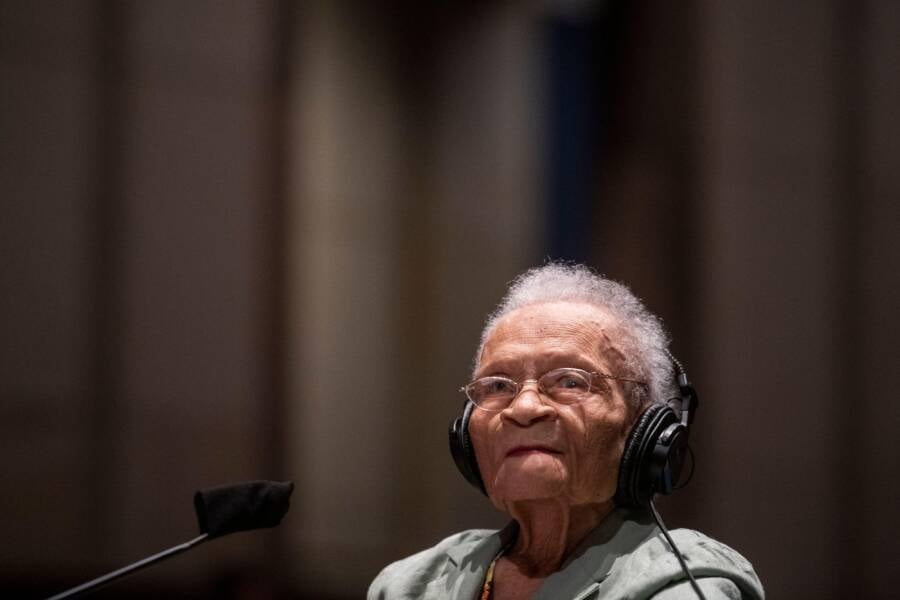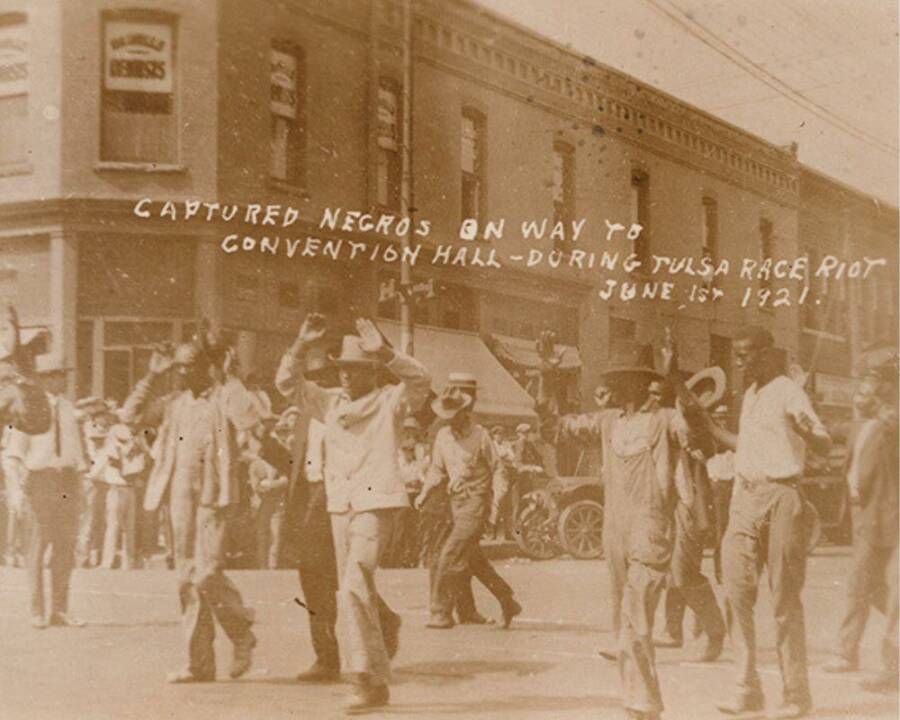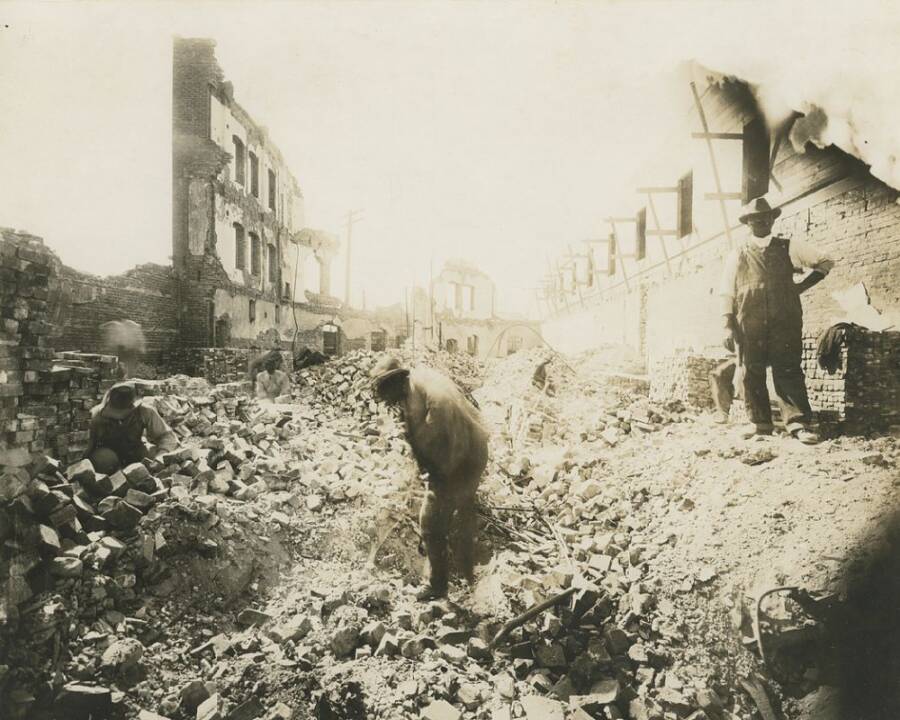Viola Fletcher was just seven years old when her family was displaced by the Tulsa Race Massacre, and the violence she witnessed that day haunted her for over a century.

MediaPunch Inc / Alamy Stock PhotoViola Ford Fletcher testifying in Congress in 2021.
Viola Ford Fletcher, one of the last survivors of the 1921 Tulsa Race Massacre, died on Monday, Nov. 24, 2025, surrounded by family at a Tulsa hospital. She was 111.
“She had a beautiful smile on her face,” her grandson Ike Howard told CNN. “She loved life, she loved people.”
Fletcher had spent her later years seeking justice for the massacre, a deadly attack by a white mob on the once-thriving Black community of Greenwood in Tulsa, Oklahoma. She was seven years old when the assault on her neighborhood began on May 31, 1921, after local news outlets released sensationalized reports about a young Black man accused of assaulting a white woman, with one outlet running the headline “Nab Negro for Attacking Girl in an Elevator.”
Over 18 hours, the Greenwood district — once referred to as “Black Wall Street” — was decimated by an angry white mob that killed hundreds of people, burned and looted homes and businesses, and left 35 city blocks destroyed.
“The questions I had then remain to this day,” Fletcher wrote in her memoir, Don’t Let Them Bury My Story. “How could you just give a mob of violent, crazed, racist people a bunch of deadly weapons and allow them — no, encourage them — to go out and kill innocent Black folks and demolish a whole community?”
The Devastation Of The Tulsa Race Massacre
The Tulsa Race Massacre was the culmination of years of mounting tension between Black and white residents of Tulsa, Oklahoma. Greenwood had been established in 1906 by wealthy Black landowner O. W. Gurley, who purchased 40 acres of land and began loaning money to other Black citizens who wanted to start businesses. Soon enough, Greenwood was thriving and had earned the nickname “Black Wall Street.”
Racist white residents in the surrounding regions took note, too. The prospering Black community made their blood boil. Resentment built up in them. They were ready to explode with rage. All they needed was something to light the fuse.
This spark came in the form of a newspaper article, published in the white-owned Tulsa Tribune, which published a sensationalized report about a 19-year-old Black shoeshine named Dick Rowland who was accused of assaulting 17-year-old Sarah Page in an elevator.
“The girl said she noticed the negro a few minutes before the attempted assault looking up and down the hallway… as if to see if there was anyone in sight but thought nothing of it at the time,” the paper reported. “A few minutes later he entered the elevator she claimed, and attacked her, scratching her hands and face and tearing at her clothes.”

Tulsa Historical Society & MuseumBlack men being marched down the street at gunpoint during the Tulsa Race Massacre in 1921.
Page never pressed charges against Rowland. According to his account, he had simply tripped and fallen on Page while on his way to the restroom. Either way, the fuse was lit.
Rowland was taken into custody, and a white mob quickly formed, intending to kidnap Rowland from the local jail to lynch him. The Black men of Greenwood, however, formed their own armed militia to meet the white mob and prevent the injustice from being carried out.
A separate violent confrontation between Black and white residents plunged the city into full-on war. Though it lasted less than 18 hours, the Tulsa Race Massacre would end with the declaration of martial law, the deployment of the Oklahoma National Guard, as many as 300 people dead, 35 city blocks leveled, 191 businesses destroyed, and roughly 10,000 Black residents displaced.
Thousands of white rioters flooded into Greenwood, unleashing their fury as they shot Black men in the streets while buildings burned around them. One man even fired his shotgun at Fletcher’s family’s horse-drawn buggy as they attempted to flee, mere moments after she watched a Black man’s head explode like “a watermelon dropped off the rooftop of a barn.”
These horrific sights remained drilled into Fletcher’s mind for the rest of her life.
Survivors Continue To Fight For Reparations
Although she spent much of her life silent on the massacre, Fletcher began to speak about it more publicly in her later years, especially as surviving victims of the attack publicly fought for reparations and accountability.
Fletcher’s death carries significant symbolic weight, too. In June 2024, the Oklahoma Supreme Court dismissed a lawsuit from the survivors on the basis that Tulsa’s current residents had nothing to do with the massacre and that the perpetrators of that violence had all since died. The lawsuit was filed in 2020.

Public DomainGreenwood residents dig through the ruins of the Gurley Hotel in the aftermath of the massacre.
“I still see Black men being shot, Black bodies lying in the street. I still smell smoke and see fire. I still see Black businesses being burned. I still hear airplanes flying overhead. I hear the screams,” Fletcher testified in front of the House Judiciary Subcommittee on the Constitution, Civil Rights, and Civil Liberties in 2021, per CBS.
None of the perpetrators of the massacre were ever prosecuted for their crimes.
Up until her death, Fletcher was one of the few people still alive who could speak to the horrors of the massacre firsthand. Another survivor, Fletcher’s brother Hughes Van Ellis, died in October 2023 at the age of 102. With Fletcher’s passing, the only living survivor of the massacre is Lessie Benningfield Randle, who is also 111.
“I will never forget the violence of the white mob when we left our home,” Fletcher wrote in her memoir. “I have lived through the massacre every day. Our country may forget this history, but I cannot.”
After learning about the death of Viola Ford Fletcher, read the often untold story of the 1919 Elaine Race Massacre. Or, learn how the Brixton Riots forced Britain to have a national reckoning on race.





